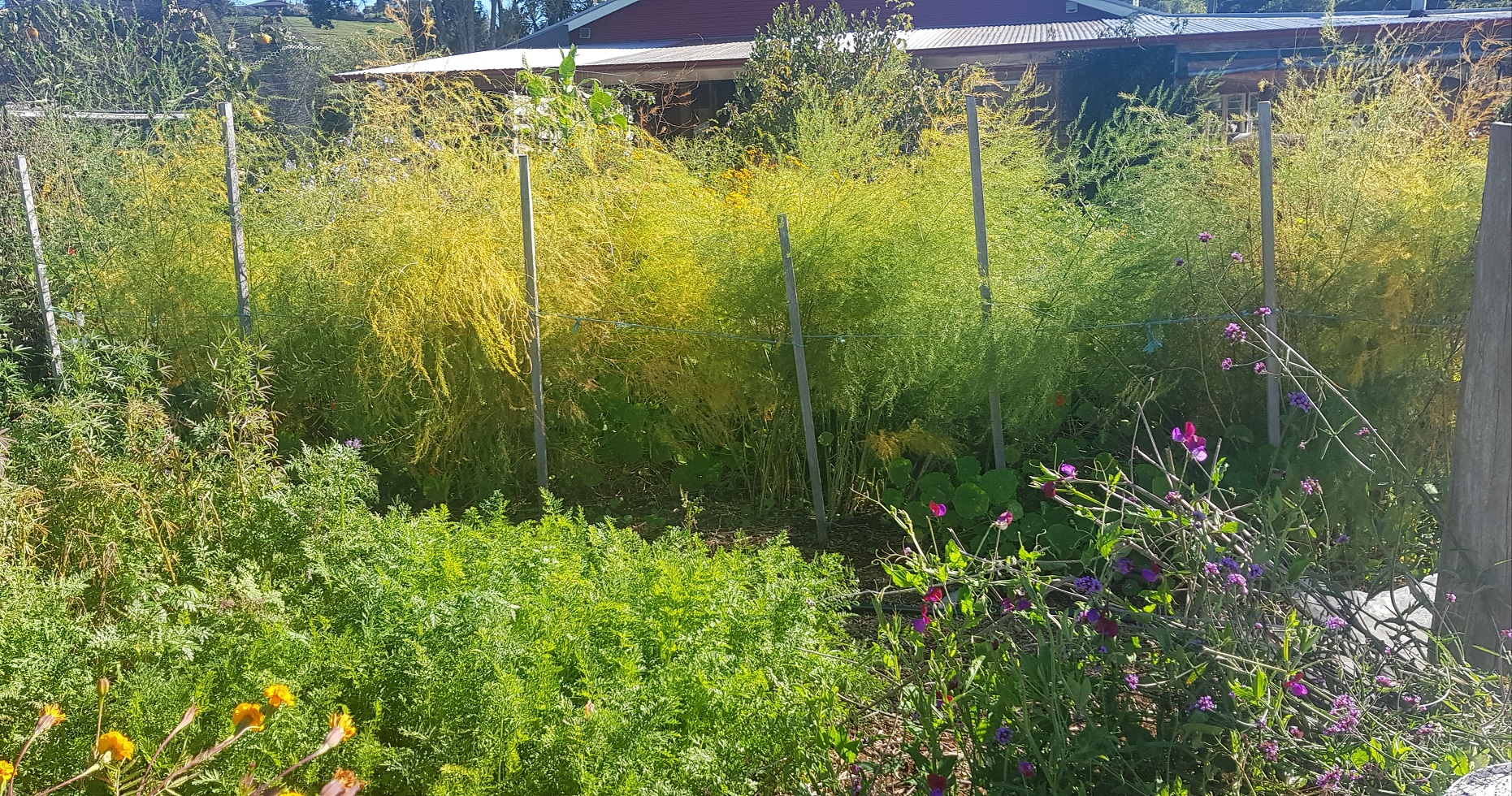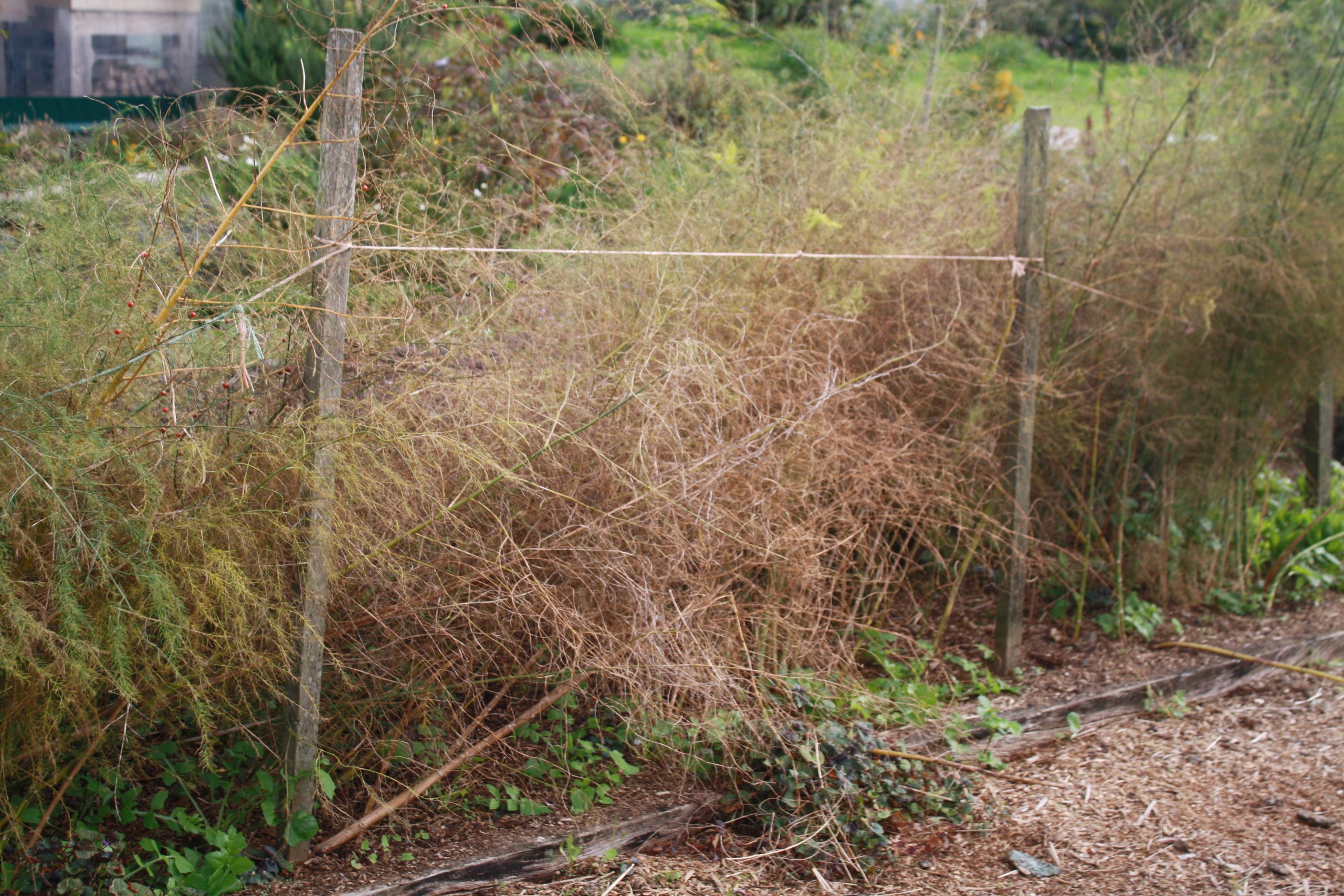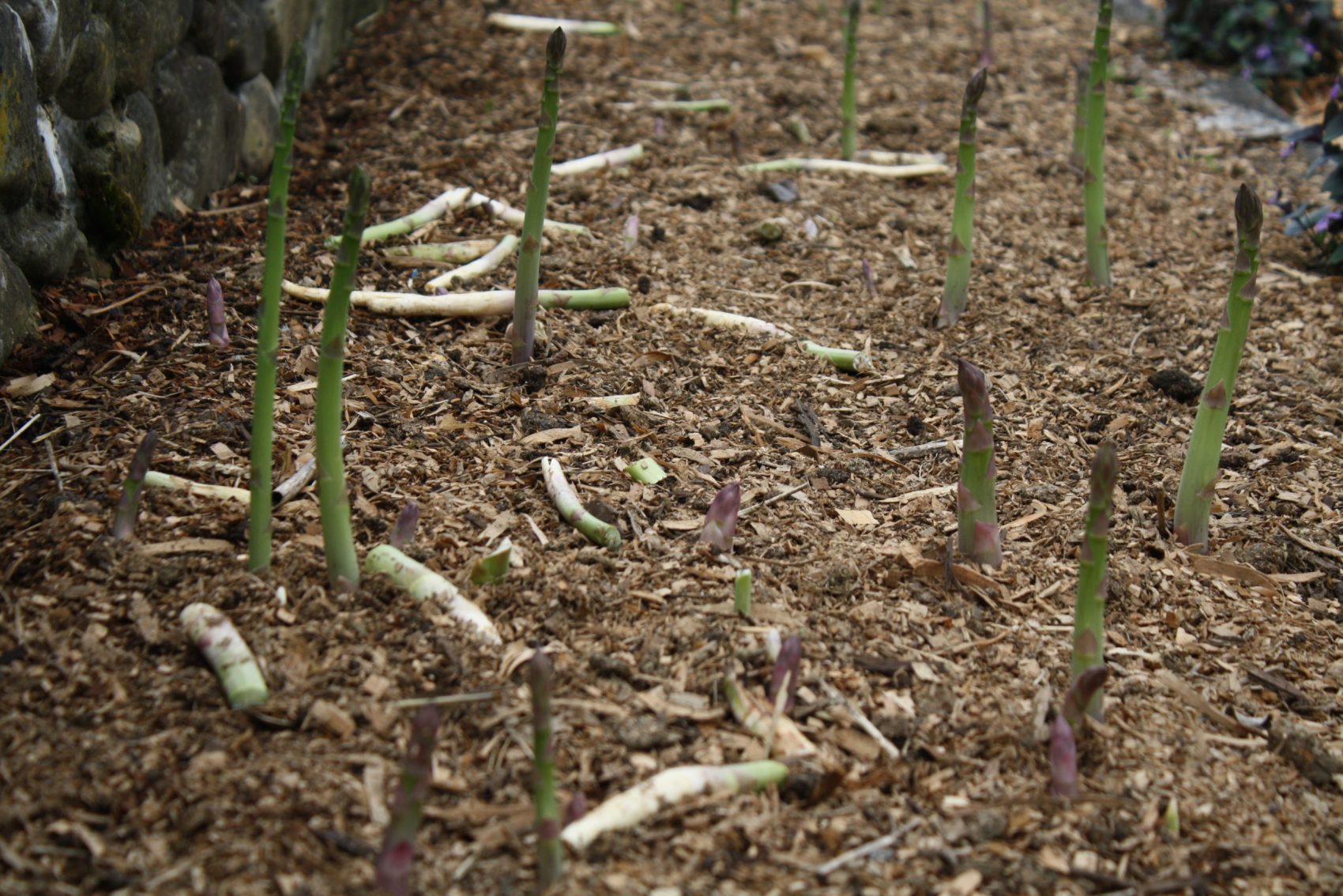How to Finish Asparagus + Prep it for Spring


Asparagus ferns will likely be tall and green and ferny, and getting in the way of everything - corral them behind a string-line so as they can finish in peace. Letting the stalks wither and go full cycle is a nourishing and important step in the process towards an abundant spring crop.
Natures design is so very elegant in this way - each plant containing, within itself much of what it needs to flourish.

In a month or two, when the ferns have completely dried off, chop them down and pile them beside the bed.
Take the opportunity to remove any pernicious weeds. Don't worry so much about soft, gentle weeds - the pile of organic matter you are about to spread on top will knock them right back.
Cover the bed with a most generous layer of mature compost, well rotten manure, vermicastings and/ or the gold star of asparagus food - seaweed. Don't worry about burying the spears - they were born to drill and can easily make their way through a pile of organic matter.
Then chop up the old canes and stir them through a homemade mulch made up mostly of stalky/ dry/ woody stuff. Spread this on top.

